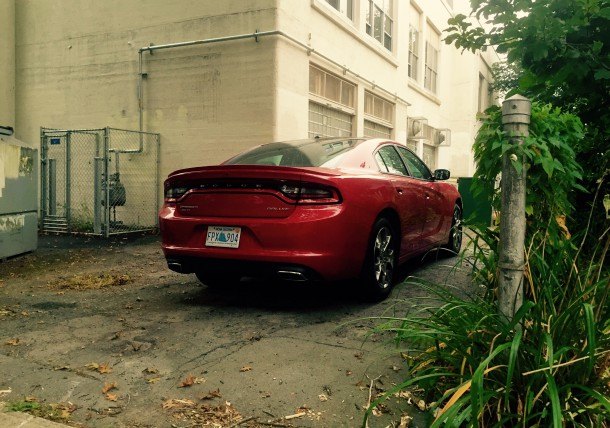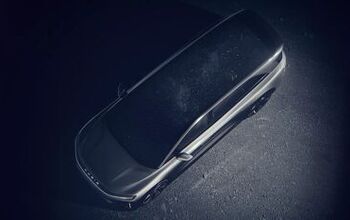TTAC Wants, America Doesn't: U.S. Full Size Car Sales Are Plunging
Only weeks after TTAC’s managing editor publicly declared his yearning for a V8-powered Dodge Charger, I was driving the same V6-powered Charger that got Mr. Stevenson’s motor running.
His response, the response of a young man whose lifestyle necessitates no firm requirements from his transportation device: I want this car.
My response, the response of a slightly more aged man whose lifestyle necessitates the frequent carriage of strollers, the frequent installation of a Diono Radian RXT, and the frequent responsibility of ferrying lanky individuals in the rear seat: Big family cars ain’t what they used to be.
Or, in comparison with their ancestors, are these full-size sedans infinitely better, let down only by modern LATCH requirements and comparisons with modern vehicles that make family friendliness their core mission?
Besides a rear seat which offers far less legroom than the Charger’s exterior dimensions suggest, a number of little things conspire to make the car less appetizing for those of us who’ve publicly manifested our fertility. The lower anchors are tucked away, as if to say, “Please don’t find us – we hope never to be touched by human hands.” The top tether anchor is so inordinately bulky that detaching the tether, sorely hindered as you’ll be by the headrest and rear window, is not a task for the uninitiated.
And yet, the experience of driving the Charger completely rearranged my viewpoint. Imperturbable ride quality, surprisingly quick steering, plenty of power even from this base V6 (though it does have 300 horsepower due to a boost from the Rallye package), and an overall sense of solidity and strength produce memories of Detroit’s successful big car era. Sure, there are a handful of chintzy bits – the wiper/signal stalk doesn’t belong in a $40K+ car; the shifter squeaks and squawks — but the Charger does not by any means feel cheap or unfinished.
Nevertheless, even aided by Hellcat hype, Charger sales are flat, year-over-year, and August volume plunged 18 percent. This isn’t out of the ordinary for a volume brand large car in 2015. Through the first eight months of 2015, the Buick LaCrosse, Chevrolet Impala, Chrysler 300, Ford Taurus, Hyundai Azera, Kia Cadenza, Nissan Maxima and Toyota Avalon are all selling less often than they were during the same period one year ago.
Child seat installation is far from the only reason large car buyers are turning away, if it’s even a reason for anybody but the Cains. But with midsize cars offering similar space for less money, entry-level premium cars providing more cachet, crossovers appealing to an ever broader cross-section of the market, and even crew cab pickup trucks attracting a large number of family car purchases, traditional large cars are bound to struggle.
U.S. sales of this nine-car group plunged by 63,182 units over the last eight months, a 17-percent decline that’s far worse than the overall passenger car sector’s 3-percent year-to-date drop. With only 305,942 sales between the LaCrosse, Impala, 300, Charger, Taurus, Azera, Cadenza, Maxima and Avalon so far this year, segment-wide sales are down 23 percent compared with the first eight months of 2013. Their share of the U.S. car market is down to just 5.8 percent, barely better than the Toyota Camry, which produces 5.5 percent of all U.S. car sales on its own.
Automakers read the tea leaves. The latest Ford Taurus was revealed in Shanghai for Chinese, not American, buyers. In Canada, Hyundai doesn’t even bother to offer the Azera, recognizing there’s no demand for the car. Mazda and Mitsubishi, which once positioned sedans above their midsize nameplates, have long since given up on the segment.
As for the Charger, I’m duty bound to acknowledge that I want one, particularly in Hellcat form or as a Chrysler 300. I’m just surprised that I don’t feel that a car of this size works for me at this stage of my life. Then again, my demands for family friendliness are substantial.
Timothy Cain is the founder of GoodCarBadCar.net, which obsesses over the free and frequent publication of U.S. and Canadian auto sales figures. Follow on Twitter @goodcarbadcar and on Facebook.
More by Timothy Cain
Latest Car Reviews
Read moreLatest Product Reviews
Read moreRecent Comments
- SCE to AUX All that lift makes for an easy rollover of your $70k truck.
- SCE to AUX My son cross-shopped the RAV4 and Model Y, then bought the Y. To their surprise, they hated the RAV4.
- SCE to AUX I'm already driving the cheap EV (19 Ioniq EV).$30k MSRP in late 2018, $23k after subsidy at lease (no tax hassle)$549/year insurance$40 in electricity to drive 1000 miles/month66k miles, no range lossAffordable 16" tiresVirtually no maintenance expensesHyundai (for example) has dramatically cut prices on their EVs, so you can get a 361-mile Ioniq 6 in the high 30s right now.But ask me if I'd go to the Subaru brand if one was affordable, and the answer is no.
- David Murilee Martin, These Toyota Vans were absolute garbage. As the labor even basic service cost 400% as much as servicing a VW Vanagon or American minivan. A skilled Toyota tech would take about 2.5 hours just to change the air cleaner. Also they also broke often, as they overheated and warped the engine and boiled the automatic transmission...
- Marcr My wife and I mostly work from home (or use public transit), the kid is grown, and we no longer do road trips of more than 150 miles or so. Our one car mostly gets used for local errands and the occasional airport pickup. The first non-Tesla, non-Mini, non-Fiat, non-Kia/Hyundai, non-GM (I do have my biases) small fun-to-drive hatchback EV with 200+ mile range, instrument display behind the wheel where it belongs and actual knobs for oft-used functions for under $35K will get our money. What we really want is a proper 21st century equivalent of the original Honda Civic. The Volvo EX30 is close and may end up being the compromise choice.



































Comments
Join the conversation
I've got two small kids and am on my third LX car, a 300C. I don't see what the big deal is. The cars (even the Challenger) fit our family, our stuff and are nice to drive. Much better than a freight train pickup or stodgy CUV. So the lower tether anchors are an inch into the seat, that's not going to stop me from buying the rest of the car. The reason there isn't growth in this segment is because SUVs/CUVs/trucks are more fashionable at the moment, and "midsize" cars offer similar capacity at a discount.
I had a 2015 Charger as a rental and in 700 miles of mixed driving( but mostly highway) I enjoyed everything about the car except the rearward visibility and that the transmission was just a bit slow at times. But rearward vis sucks in nearly any new vehicle and it had a decent backup camera. This was an SXT and as much as I love V8 noise and such, the V6/8spd had more than enough to deal with anything I threw at it. It was a great car, certainly the most enjoyable rental I've had in a long time. I've been in an uncles V8 Challenger and its impressive, but not worth the premium to me. If the pocketbook would allow, maybe, but the V6 is good enough. My reason for why it doesn't totally work is size. We have an Odyssey for family duty and my car spends most of its life sitting at the airport. Occasionally, I have to make the 4 hour drive to my base in DC, but mostly, it sits. I just don't really need another 200+ inch car in my garage, in which an Odyssey and Mazda 5 barely fit( along with all the crap with a family of four with twin 5 year olds). And we live pretty simply in an older modest house. I don't doubt that the real world economy of the Charger would match the aging Mazda, but I just don't need to drive that much car around.